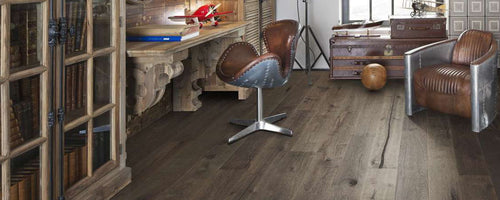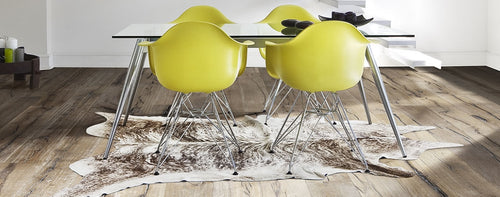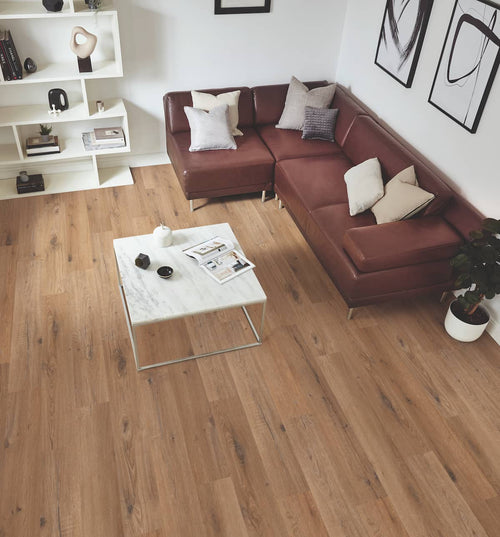How To Measure Carpet
To know how much carpet to order, you need to first measure the room in which the carpet will be going. This measurement doesn't need to be perfect. In fact, leaving at least 10cm for excess, which can be used for trimming and fitting, especially if the room isn't perfectly square. Rooms can come in many shapes and sizes, but an overall area can still be calculated. Follow our guide on how to measure your floor to find out how to get an accurate room measurement.Preparing Your Floor
Before fitting your carpet, you must ensure that the surface you're laying your carpet on is ready and intact. Sweep the floor of any dirt and check for any defects in your subfloor. Cracks in the concrete or lose floorboards can cause draughts to come through and will cause damage in the long term. So before laying your carpet, ensure the floor is level and defect free.Carpet Fitting Tools
You will need the following tools to install a carpet. These tools will differ depending on the type of floor you are fitting your carpet to.
- Knee pads
- Stanley knife
- Carpet tucker
- Carpet stretcher
- Duct tape
- Spray adhesive
- Staple gun
- Hammer
- Electric drill
Installing Carpet Grippers
Carpet grippers are used to prevent your carpet from moving and keep it flush to the edges of the room. Carpet grippers are usually 1m long rods with angled pins that hook onto the underside of the carpet to keep it in place. When installing carpet grippers, it is important to wear gloves as the pins are very sharp.Position the carpet gripper with the angled pins pointing towards the skirting board with a 7-8mm gap between the carpet gripper and the skirting board. You can use a piece of timber to ensure this gap is consistent across the entire perimeter of the room. Using a hammer, carefully nail the carpet gripper down into the wooden floor.
If you install carpet grippers onto a concrete floor, you can use a grip adhesive and stick the carpet gripper onto the floor instead of nailing. Carpet grippers should be installed across the entire perimeter of the room, except across the door threshold.
Installing Carpet Underlay
Installing a carpet underlay helps protect your subfloor, increases insulation and gives extra cushioning underfoot.
To lay a carpet underlay, you will need a sharp Stanley knife, duct tape and a staple gun. Ensure the rubber side is facing down and put the carpet underlay up to the carpet grippers. Cut the carpet underlay to size, using the trimmings to fill in the gaps and connecting them all by attaching each piece with duct tape. Use a staple gun to staple the underlay to the floor if the floor is wooden. Alternatively, you can use a spray adhesive to stick the underlay to concrete floors.
How To Fit A Carpet - Step by Step
Always wear knee pads when laying the carpet as there is a lot of kneeling, and clear the room to make laying the carpet easier.
- Loosely lay the carpet into position, ensuring the pattern goes in the same direction as other adjacent rooms with the same carpet. Leave around 50mm to 75mm of excess carpet at every edge to ensure enough carpet is available.
- Starting at the corner furthest away from the door and connecting to the longest wall, cut the excess carpet vertically above the corner in stages until you can ease the carpet into the corner.
- Going along the longest wall and working around the room, use a carpet tucker to make a firm crease along the skirting board, giving you a fold line.
- Use a sharp Stanley knife, cut along the fold line, but be aware of cutting into the carpet underneath.
- Go back to the first corner, place the carpet stretcher with the teeth facing down and push the padded end firmly with your knee so that the carpet hooks onto the gripper on either side of the corner. Use the carpet tucker to push the excess carpet between the skirting and the gripper.
- Repeat this process along the longest wall, then the two adjacent walls and finish with the remaining wall closest to the doorway.
- If there are any ripples in the floor, unhook the carpet and use the carpet stretcher to realign the carpet.
- Finishing off at the doorway, trim the excess carpet around the door architrave and cut the carpet so that it ends horizontally in the centre of the door frame to meet the flooring in the next room.
How to fit a Door Threshold Bar
The door threshold bar neatly joins flooring from one room to the next. A door threshold bar can join two completely different types of flooring together, which are within our flooring accessories. To install a door threshold bar, position the bar on the floor in the centre of the doorway. Use a hacksaw to cut it to the correct length so it is flush between the architrave. For concrete floors, drill holes into the floor with a power drill and a masonry bit in line with the holes on the bar, and screw the bar onto the floor using the screws and wall plugs. For a wooden floor, screw the bar straight to the floor. The bar threshold should then be visible on both sides of the door when closed.
Fitting Carpet Yourself
Now you know how to lay a carpet, take a look at our wide range of carpets and use our room visualiser tool to help make your decision.
Taking on a DIY carpet installation will help towards saving on your home improvements budget, but if you need some extra advice on laying your carpet or need guidance on finding a carpet fitter, don't hesitate to contact us.


